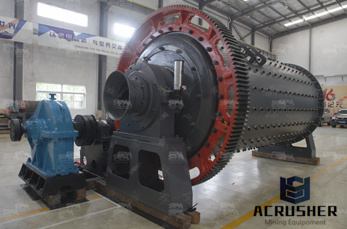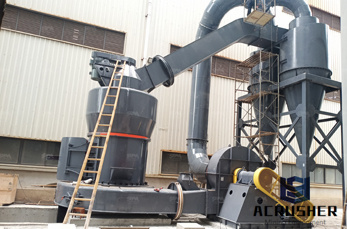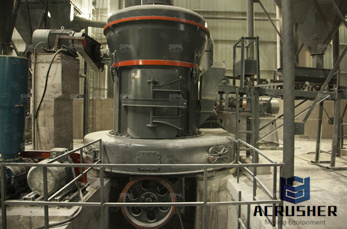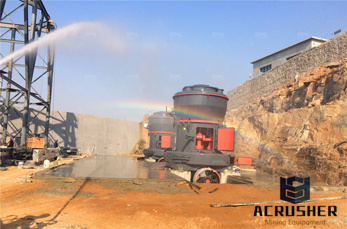(PDF) Sustainability of gypsum products as a construction ...
sum concrete blocks, it is equal to kg; for gypsum concrete with its low water requirement, it is kg ( Ferronskaya, 2004 ). According to Ferronskaya (2004), if
 WhatsApp)
WhatsApp)
sum concrete blocks, it is equal to kg; for gypsum concrete with its low water requirement, it is kg ( Ferronskaya, 2004 ). According to Ferronskaya (2004), if

★ Gypsum is used in making surgical and orthopedic casts, such as surgical splints and casting molds. ★ Gypsum plays an important role in agriculture as a soil additive, conditioner, and fertilizer. It helps loosen up compact or clay soil, and provides calcium and sulfur, which are essential for the healthy growth of a plant.

Raw materials used for manufacturing of Portland cement are found naturally in the earth''s crust. It is made primarily from calcareous and argillaceous materials and gypsum. Calcareous materials contain limestone or chalk while argillaceous materials comprise an oxide of silicaalumina and iron.

Gypsum plaster, white cementing material made by partial or complete dehydration of the mineral gypsum, commonly with special retarders or hardeners added. Applied in a plastic state (with water), it sets and hardens by chemical recombination of the gypsum .

Gypsum plays a crucial role in cement. Though it is used in a small quantity, in the range of percent in terms of SO 3, gypsum™s role in cement is significant, more predominantly at early ages. Gypsum renders workability to mortar or concrete by keeping the cement in plastic state at early age of hydration. This is achieved by ...

Gypsum is a mineral and is hydrated calcium sulfate in chemical form. Gypsum plays a very important role in controlling the rate of hardening of the cement. During the cement manufacturing process, upon the cooling of clinker, a small amount of gypsum is introduced during the final grinding process.

The main features of these cement ingredients along with their functions and usefulness or harmfulness are given below: Lime : Lime is calcium oxide or calcium hydroxide. The presence of lime in a sufficient quantity is required to form silicates and aluminates of calcium.

Gypsum, CSH 2; Chemical reactions during hydration When water is added to cement, the following series of reactions occur: The tricalcium aluminate reacts with the gypsum in the presence of water to produce ettringite and heat: Tricalcium aluminate + gypsum + water ® ettringite + heat C 3 A + 3CSH 2 + 26H ® C 6 AS 3 H 32, D H = 207 cal/g

Gypsumboard face paper is commonly 100 percent recycled from newsprint, cardboard, and other postconsumer waste streams, but most recycled gypsum in wallboard products is postindustrial, made from gypsumboard manufacture. Gypsum board should be purchased in sizes that minimize the need for trimming (saving time and waste).

Nov 06, 2015· A slab of gypsum concrete weighs 13 pounds per square foot versus 18 pounds per square foot for regular concrete. Even though gypsum weighs less, it still can have the same compressive strength as concrete. The brand name GypCrete, a Maxxon Corporation product, has become the general use word for all gypsum toppings by construction people.

May 21, 2020· Gypsum can improve some acid soils even beyond what lime can do for them, which makes it possible to have deeper rooting with resulting benefits to the crops, Dick said. "Surfaceapplied gypsum leaches down to to the subsoil and results in increased root growth," he said. 3. Improves soil structure.

Gypsum plays a very important role in controlling the rate of hardening of the cement. During the manufacturing of cement process, upon the cooling of clinker, a small quantity of gypsum is ...

Jul 12, 2012· Best Answer: Gypsum is a mineral and is hydrated calcium sulfate in chemical form gypsum plays a very important role in controlling the rate of hardening of cement during the cement manufacturing process, upon the cooling of clinker, a small amount of gypsum is introduced during the final grinding process.

Cement clinker is a solid material produced in the manufacture of Portland cement as an intermediary product. Clinker occurs as lumps or nodules, usually 3 millimetres ( in) to 25 millimetres ( in) in diameter. It is produced by sintering (fusing together without melting to the point of liquefaction) limestone and aluminosilicate materials such as clay during the cement .

Cement Cement Extraction and processing: Raw materials employed in the manufacture of cement are extracted by quarrying in the case of hard rocks such as limestones, slates, and some shales, with the aid of blasting when necessary. Some deposits are mined by underground methods. Softer rocks such as chalk and clay can be dug directly by excavators.

Apr 26, 2018· Kelvin Louis in this post looks at how gypsum plaster plays an important role in the ceramic industry and how cement manufacturers have taken advantage of the benefit that it .

What is the role of gypsum in cement manufacture . Proportion of gypsum in cement industry is 45%. Get Price And Support Online; The role of gypsum in the production of cement? Your toughest technical questions will likely get answered within 48 hours on ResearchGate, the professional network for scientists. ...

Aug 13, 2019· What is Gypsum? Gypsum is a naturally occurring mineral mined from deposits formed by ancient seabeds as a raw material. Composed of calcium sulfate and water, it is used for a variety of manufacturing, industrial, and agricultural uses. Its color...

It hydrates rapidly, but does not contribute much to strength of the cement paste. By mixing these compounds appropriately, manufacturers can produce different types of cement to suit several construction environments. References: Sidney Mindess J. Francis Young (1981): Concrete, PrenticeHall, Inc., Englewood Cliffs, NJ, pp. 671.

While natural gypsum has been mined and manufactured for centuries, the process of manufacturing synthetic gypsum has only been available for the last few decades. In case you''re not familiar with synthetic gypsum''s characteristics and uses, read on to learn the basics about this incredible product.

Gypsum plaster, white cementing material made by partial or complete dehydration of the mineral gypsum, commonly with special retarders or hardeners added. Applied in a plastic state (with water), it sets and hardens by chemical recombination of the gypsum with water. For especially hard finish

Gypsum Manufacturing Process Description12 Gypsum is calcium sulfate dihydrate (CaSO4 2H2O), a white or gray naturally occurring mineral. Raw gypsum ore is processed into a variety of products such as a portland cement additive, soil conditioner, industrial and building plasters, and gypsum wallboard. To produce plasters or

Jan 07, 2016· Gypsum is a mineral that has been used in building materials for centuries. However, gypsum concrete as an underlayment is still misunderstood despite its growth in popularity over the last 40 years. As a result, several myths about using gypsum in this way have become canonized.

The Role of Gypsum in Cement | Gypsum | Plaster Scribd. I t is used in the manufacture of wall boards, paper, paints, plasters and cement. Gypsum is ... The gypsum content of cement is expressed in terms of its sulphate (SO 3 ) content. ... grindability of the cement, which is the grinding energy required to produce cement. ... The addition ...
 WhatsApp)
WhatsApp)